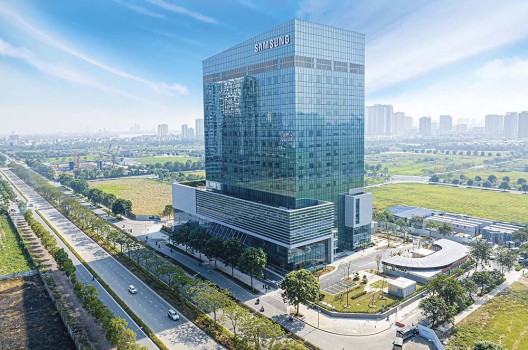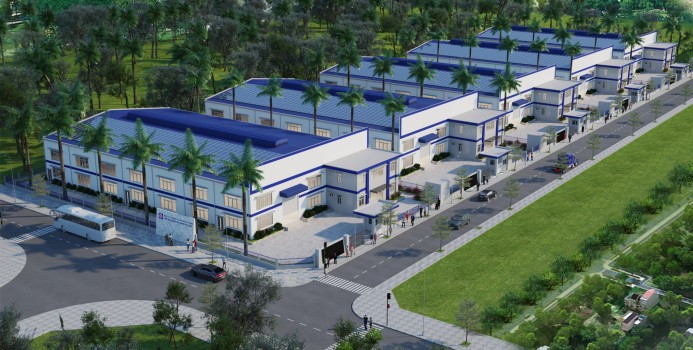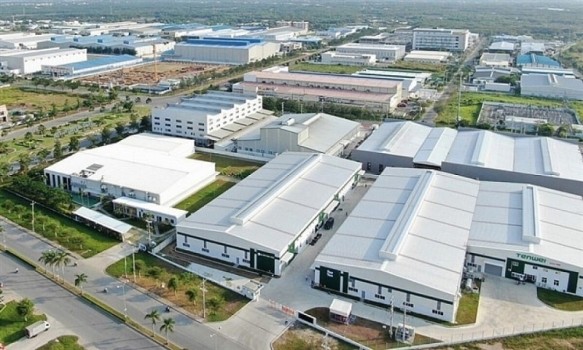Customers are drawn to the industrial park by the production of toys and gadgets
This market has been challenged in the last year by two waves of the Covid-19 outbreak (the third and fourth time) erupting in industrial cities in the northern and southern major economic regions. Due to anti-epidemic restrictions in several provinces and cities across the country, the supply chain was briefly disrupted in the third quarter. However, when epidemic preventive measures were removed in the fourth quarter of 2021, the industrial park market maintained and recovered swiftly.
Land lease agreements in the last 12 months have been fairly diversified, ranging in size from the lowest 3-5 ha to the highest 40 ha in numerous business groups. Notably, tenants in the logistics, electronics, and toy manufacturing industries expressed strong interest in large-scale industrial property purchases spanning 20-40 hectares. A recent announcement that a Lego factory will be built in Vietnam with strong environmental, social, and governance (ESG) criteria is an example of a large-scale industrial land transaction.
The logistics and electronics industries are particularly active, with industrial property leasing and existing warehouses and workshops for use in both the North and South. Furthermore, industry sectors such as packaging, solar energy manufacturing in the North, and furniture and medical equipment in the South have seen a surge in transactions this year.
According to the company's Asia - Pacific report, supply chain disruptions generate more chances for the industrial park and logistics industry in regions near seaports, inland ports, and hubs important aviation centers. This results from managing risks in the supply chain as new objectives are established, such as the need to diversify manufacturing, expand input stocks, and keep completed items near centers of consumption in order to consume more.

Tan Tao Industrial Park, Binh Tan District, Ho Chi Minh City. Photo: Quynh Tran
The average occupancy rate at industrial parks in five key industrial provinces and cities in the North (Hanoi, Bac Ninh, Hung Yen, Hai Duong, and Hai Phong) reached 79.3% in the fourth quarter of 2021, up 3.6 percentage points year on year. Similarly, occupancy rates in the South's four major industrial provinces and cities reached 87.3%, a 0.11 percentage point increase year on year.
Despite the pandemic, average property rentals in the major industrial cities have stayed steady because of good occupancy rates. Industrial cities and provinces within an hour's drive of the centers of Ho Chi Minh City and Hanoi experienced a 15-32% price increase over the same period last year.
The industrial real estate market expanded and new investors entered the product line of ready-built warehouses and workshops last year. The rent of warehouses and ready-built factories according to modern norms increased by 5-17% over the same period last year. International investors are actively expanding their investment portfolios through land and property acquisitions as well as joint ventures with domestic firms.
According to CBRE, the supply of industrial property would expand by more than 7,000 hectares in both the northern and southern markets in 2022-2023. Second-tier industrial provinces will account for roughly 20-30% of supply in the South and North, respectively. Level 2 industrial provinces with fast-increasing infrastructure will become more appealing to investors in the future years. With a considerable quantity of new supply in the next two years, industrial land rentals will rise at a steady rate of roughly 4% per year after a period of rapid expansion from 2019 to 2021.
Similarly, Savills also has an optimistic assessment of the prospects of the industrial real estate market in 2022. Mr. Neil MacGregor, General Director of Savills Vietnam, forecasts in a recently published report that manufacturing plants of global companies will begin to establish bases in Vietnam to invest in large-scale projects that will create growth momentum for the industrial real estate market in the next 12-24 months.
According to CEO Savills, due to Vietnam's geographical qualities with significant cities, there will be the expansion in warehouse distribution, e-commerce services, and logistics to serve the domestic market in 2022. This distribution is required.
The data center segment will grow rapidly in the context of the expanding internet, which will necessitate a substantial source of data storage.
Furthermore, cold storage facilities are linked to e-commerce. Sellers on e-commerce platforms must find ways to store their goods, which increases demand for cold storage, allowing this business to thrive. "In 2022, industrial and logistics real estate (logistics real estate) will continue to grow well and become more sought after," Neil MacGregor said.
Nguồn:
Related news

09/08/2025
VIETNAM AFFIRMS ITS POSITION AS A GLOBAL TRADE AND MANUFACTURING HUB
Vietnam Affirms Its Position as a Global Trade and Manufacturing Hub

09/08/2025
VIET NAM 'S INDUSTRIAL REAL ESTATE RENT HAS INCREASED BY 70%
VIET NAM 'S INDUSTRIAL REAL ESTATE RENT HAS INCREASED BY 70%

09/08/2025
WILL THE DEMAND FOR INDUSTRIAL REAL ESTATE CONTINUE TO RISE ?
Will the Demand for Industrial Real Estate Continue to Rise?

09/08/2025
U.S. RECIPROCAL TARIFFS OFFICIALLY TAKE EFFECT
U.S. RECIPROCAL TARIFFS OFFICIALLY TAKE EFFECT
Copyright © 2022 Viet Huong IP., Ltd. All Rights Reserved
TOP



